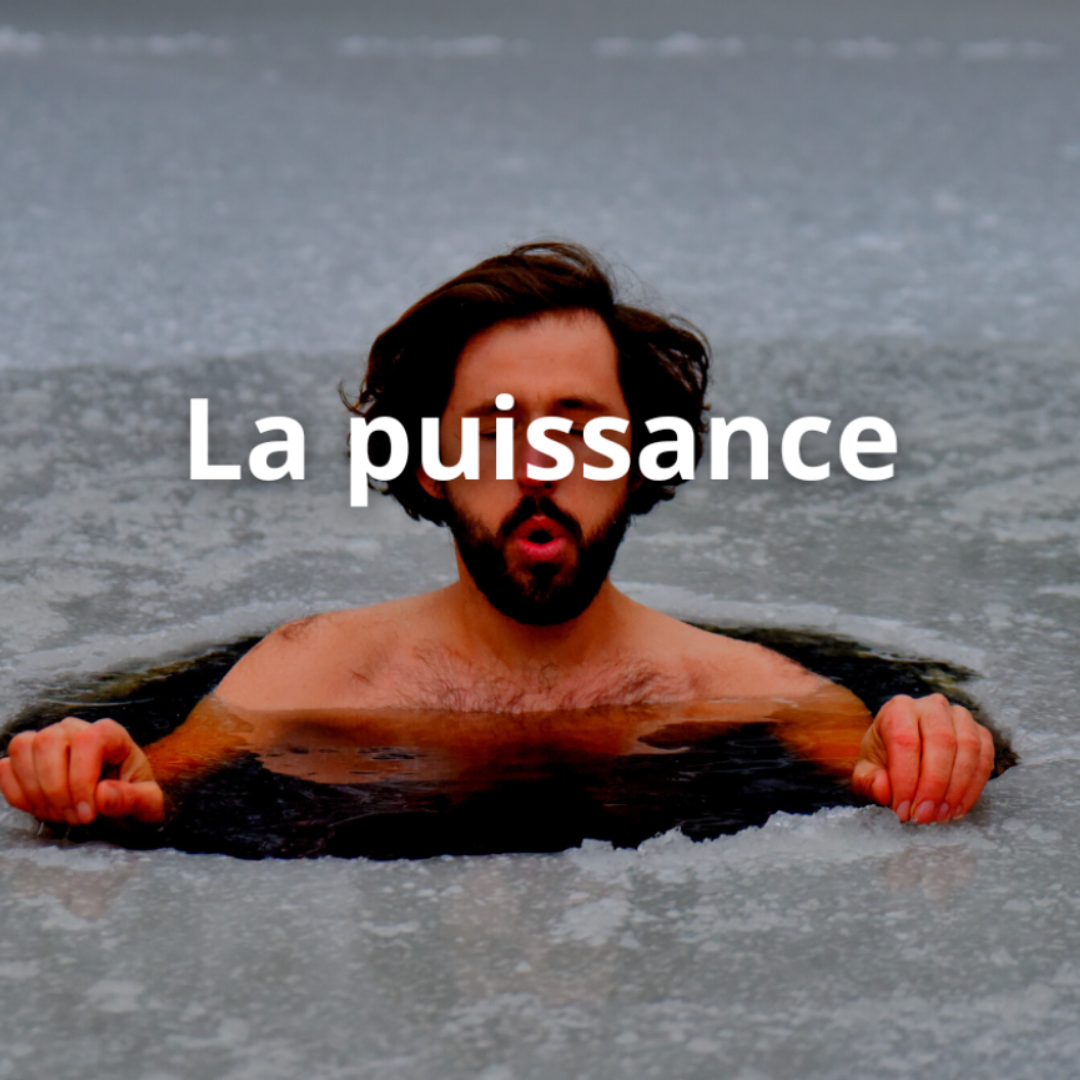The Wim Hof Method, also known as " The Iceman ", gained popularity thanks to the exploits of its founder, Wim Hof , who challenges human limits by resisting extreme temperatures. At the heart of this method is the practice of cold baths, considered an essential pillar for improving physical and mental health. Wim Hof has developed an innovative approach that combines controlled breathing, exposure to cold and mental focus to strengthen the body and mind.
The objective of this article is to provide techniques and practical advice to allow everyone to take full advantage of the benefits of cold baths according to the Wim Hof method. By understanding the basic principles of this method and applying the recommended techniques, it is possible to discover unsuspected potential to improve your health and general well-being.
The benefits of cold baths
Cold baths provide a multitude of physiological and psychological benefits, helping to improve overall health and well-being.
Exploration of physiological benefits
Cold baths stimulate blood flow by causing vasoconstriction followed by vasodilation, which helps improve circulation throughout the body. This increase in circulation can promote muscle and tissue healing, reduce soreness, and speed recovery after exercise.
Additionally, exposure to cold strengthens the immune system by stimulating the production of white blood cells and activating immune cells, which can help prevent infections and reduce the risk of disease.
Finally, cold baths have an anti-inflammatory effect by reducing the production of certain inflammatory cytokines, which may relieve symptoms of chronic inflammation and contribute to overall health.
Psychological benefits
Cold baths are also beneficial for mental health. By exposing the body to heat stress, cold baths can increase resilience to stress by strengthening the autonomic nervous system . This adaptation to stress can result in better management of daily stress and a reduction in symptoms related to anxiety and depression.
Additionally, cold baths can improve mood and concentration by stimulating the release of neurotransmitters such as norepinephrine and dopamine, which are associated with regulating mood and alertness.

Techniques for taking a cold bath
Taking a cold bath can be an intense experience, but with the right techniques, it is possible to do it in a safe and health-promoting manner.
Determining the ideal temperature
The ideal temperature for a cold bath can vary depending on individual preferences and personal goals. According to the Wim Hof method, a temperature around 10 to 15 degrees Celsius is often recommended to maximize the beneficial effects while remaining tolerable for most people. However, it is important to find the temperature that best suits your body and comfort level.
Optimal immersion duration
The duration of immersion in a cold bath depends on each person's cold tolerance and personal goals. For beginners, it is recommended to start with short periods of immersion, such as a few minutes, and gradually increase the duration as your body adapts. More advanced practitioners may choose to extend the immersion for up to several minutes or more to maximize the benefits.
Mental preparation
Mental preparation is essential before taking a cold bath. Use deep breathing and concentration techniques to calm the mind and mentally prepare for the experience ahead. The Wim Hof breathing method, which involves cycles of deep breathing followed by breath retention, can be particularly helpful in preparing for cold water immersion.
Security
It is important to take precautions to ensure your safety when taking a cold bath. Never force your body to stay in water longer than you can handle, and get out immediately if you experience symptoms such as uncontrollable shivering, numbness, or confusion. Also avoid cold baths if you have underlying health conditions such as heart or circulatory problems, or if you are pregnant. By following these safety tips , you can enjoy the benefits of cold baths with peace of mind.
When to take a cold bath: Morning or Evening?
Taking a cold bath can be beneficial at any time of the day, but there are specific benefits to doing it in the morning or evening, depending on individual needs and personal preferences.
Advantages and disadvantages of taking a cold bath in the morning
Benefits :
- Stimulates wakefulness and attention: A cold bath in the morning can help you wake up and feel more alert through stimulation of blood circulation and neurotransmitters.
- Increases energy: Exposure to cold weather can energize the body and mind, providing a healthy dose of energy to start the day.
- Builds stress resilience: By starting the day with a physical challenge, like a cold bath, you can build your stress resilience to better face future challenges.
Disadvantages:
- Can be difficult to fit into morning routine: For some, taking a cold bath in the morning may require getting up earlier or rearranging their usual routine.
Advantages and disadvantages of taking a cold bath in the evening
Benefits :
- Promotes relaxation: A cold bath in the evening can help relieve muscle tension and promote relaxation before bed.
- Improves sleep quality: Cooling the body before bed can promote better body temperature regulation, which can promote deeper, more restful sleep.
- Reduces stress accumulated during the day: Soaking in a cold bath at the end of the day can help release stress and relax before bed.
Disadvantages:
- May make it difficult to fall asleep for some people sensitive to cold.
- Requires extra time before bed to integrate the practice into the nightly routine.
Recommendations based on individual preferences and specific goals
The decision whether to take a cold bath in the morning or evening will ultimately depend on individual preferences and specific goals. For those looking to increase their energy and focus from the start of the day, a cold morning bath may be best. On the other hand, those seeking deep relaxation and improved sleep may find it more beneficial to take a cold bath in the evening. It's important to experiment and observe how your body reacts at different times of the day, and adapt your practice accordingly to get the most out of the benefits of cold baths.
Integrate cold baths into your daily routine
Taking cold baths on a regular basis can provide many long-term benefits for physical and mental health. Here are some tips for integrating cold baths into your daily routine in an effective and sustainable way:
Tips for Creating a Regular Cold Bath Routine
- Set regular times: Choose specific times in your day when you can take a cold bath consistently, whether in the morning, after exercise, or in the evening before bed.
- Plan ahead: Plan ahead when you will take your cold baths and make sure you have everything you need on hand, like towels and warm clothes.
- Start small: If you're new to cold bathing, start with short periods of immersion and gradually increase the duration as your body adapts.
- Be persistent: Stay committed to your practice even when it gets difficult. The benefits of cold baths generally appear with regular and sustained practice.
Suggestions for combining cold baths with other wellness practices
- Meditation: Take advantage of the state of calm and mental clarity after a cold bath to practice meditation. The relaxation induced by the cold bath can facilitate concentration and deepen the meditative experience.
- Exercise: Taking a cold bath after exercise can help reduce muscle inflammation and speed recovery. It can also boost your motivation by combining cold baths with physical activity.
- Deep Breaths: Use deep breathing techniques during cold bath immersion to build your stamina and ability to handle stress.
Tips for Overcoming Obstacles and Staying Motivated in Cold Bathing
- Set Specific Goals: Determine what you hope to accomplish through your cold bath practice and set clear, measurable goals.
- Find an accountability partner: Find a friend or family member who shares your interest in cold baths and encourage each other to stay engaged in your practice.
- Reward yourself: Reward yourself after each cold bath session with something nice, like a cup of hot tea or some time to relax.
- Stay Adaptable: Be prepared to adjust your routine based on changes in your schedule or comfort level. Flexibility is the key to maintaining a regular practice long term.
Cold baths, practiced according to the Wim Hof method, offer a multitude of benefits for the body and mind. By stimulating blood circulation, strengthening the immune system, reducing inflammation and improving resilience to stress, they are a holistic practice that can positively transform your health and overall well-being.
It is important to remember that everyone is unique, and therefore reactions to cold baths may vary from person to person. This is why it is essential to experiment and adjust techniques according to your own needs and preferences. Whether you are a beginner looking to improve your health or an advanced practitioner looking to optimize your performance, cold baths can be tailored to your individual situation.
Finally, remember that you are not alone on your journey to better health and wellness. The Wim Hof community provides a space where you can share your experiences, ask questions and find additional support in your cold bath practice . Together, we can continue to explore the wonders and benefits of cold baths, and inspire others to join this journey to optimal health and a fulfilled life.


Mistakes to avoid for an ice bath according to the Wim Hof method
Why take cold baths? Your instructor Wim Hof answers you here